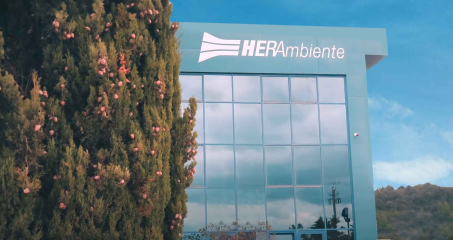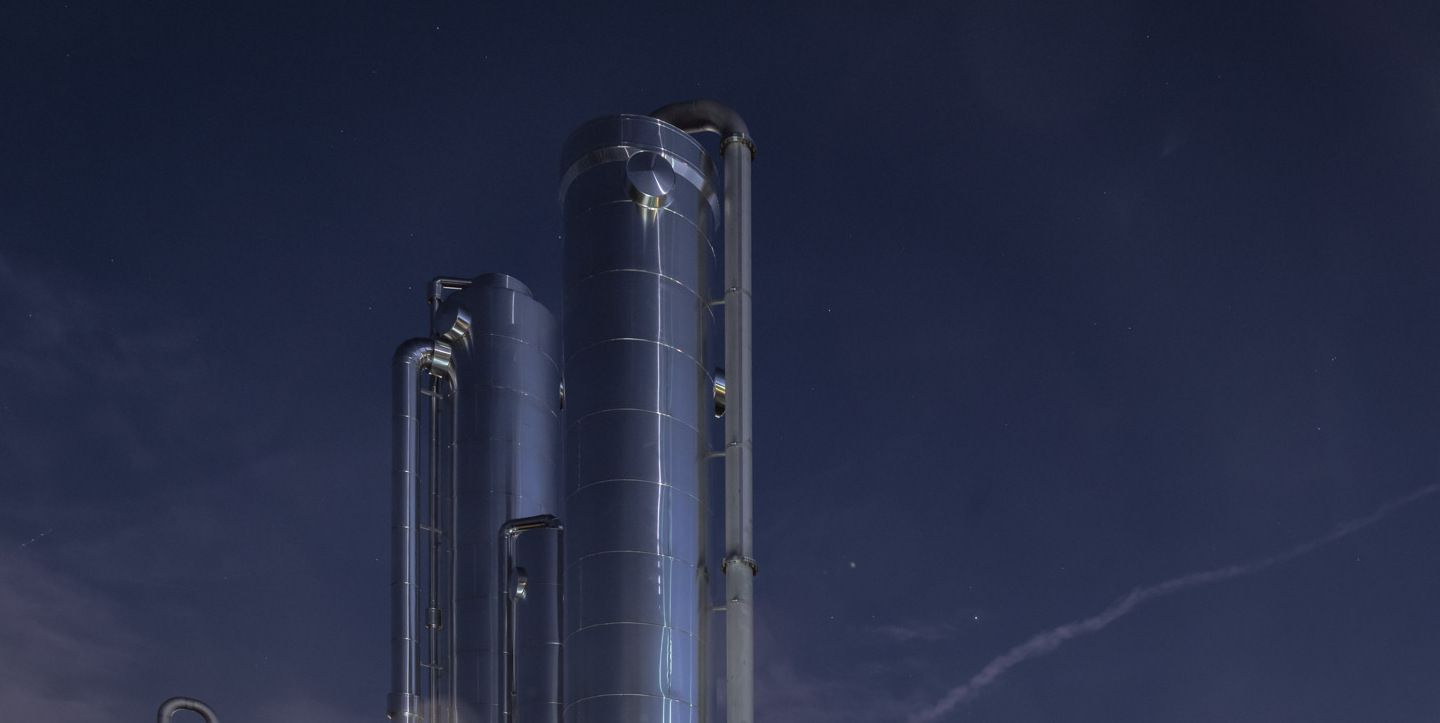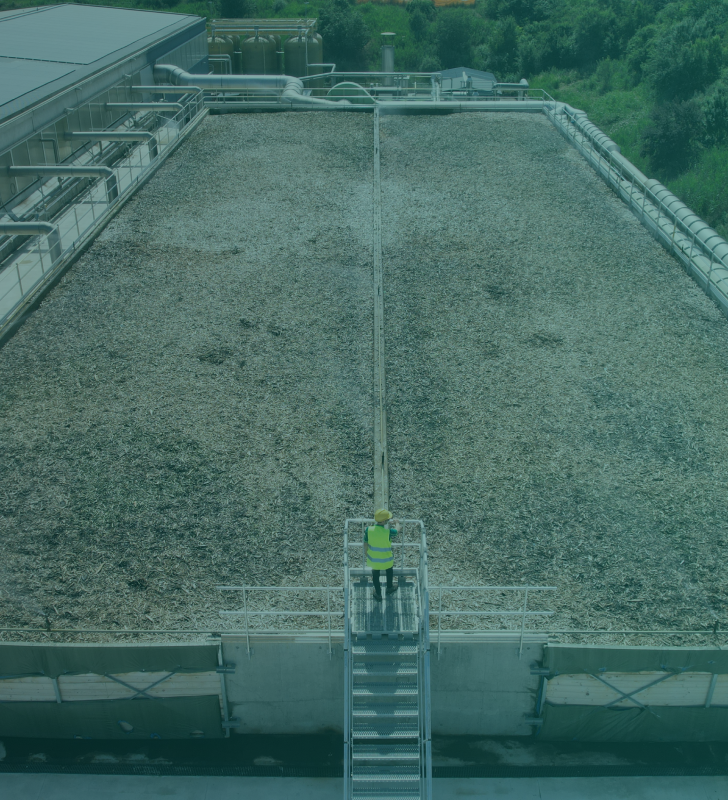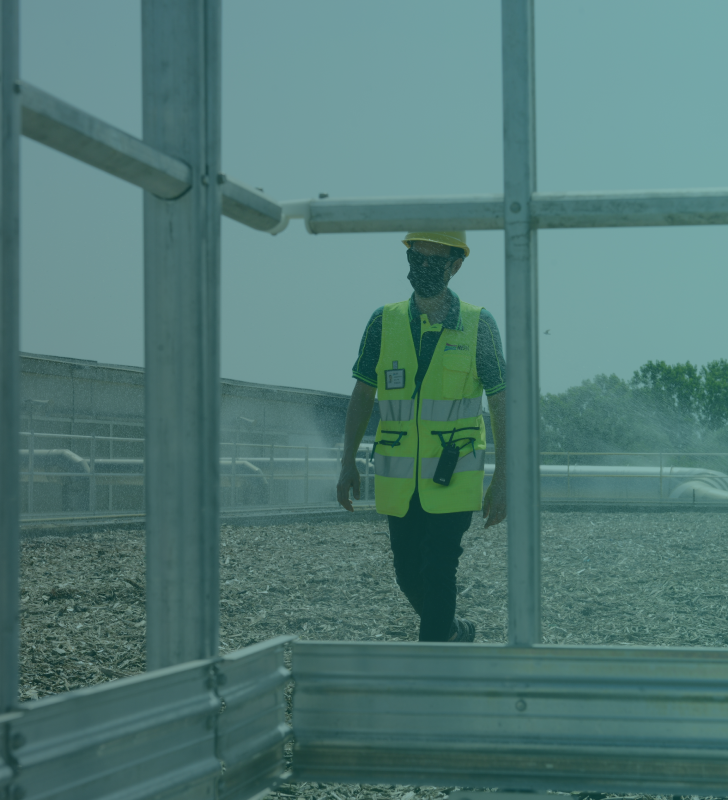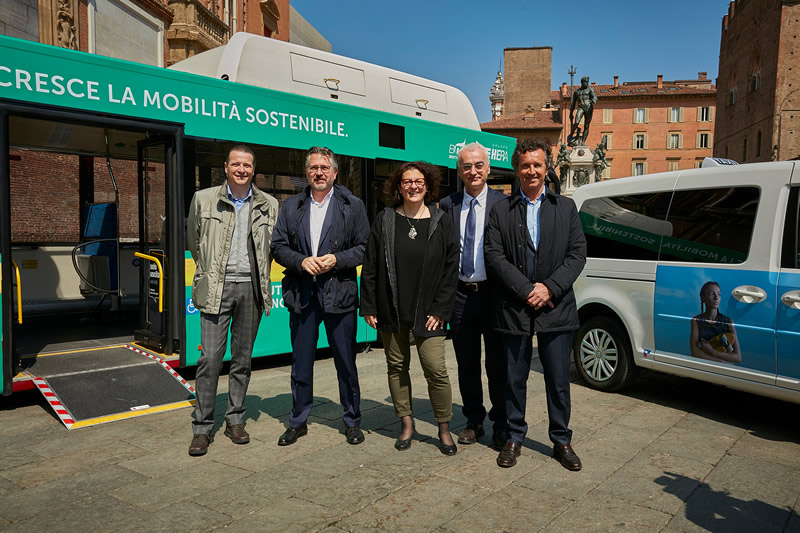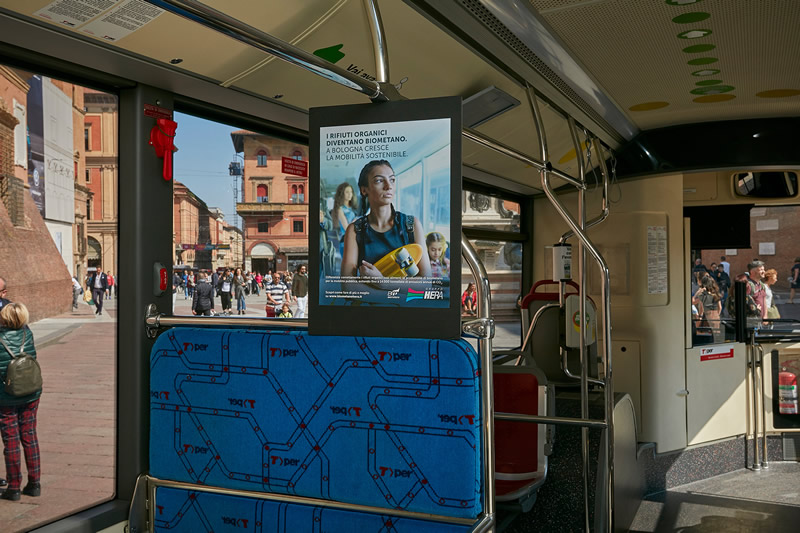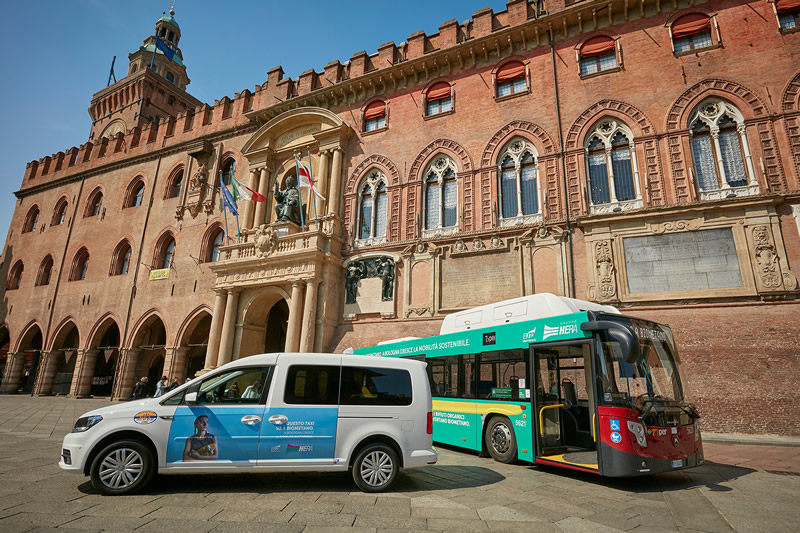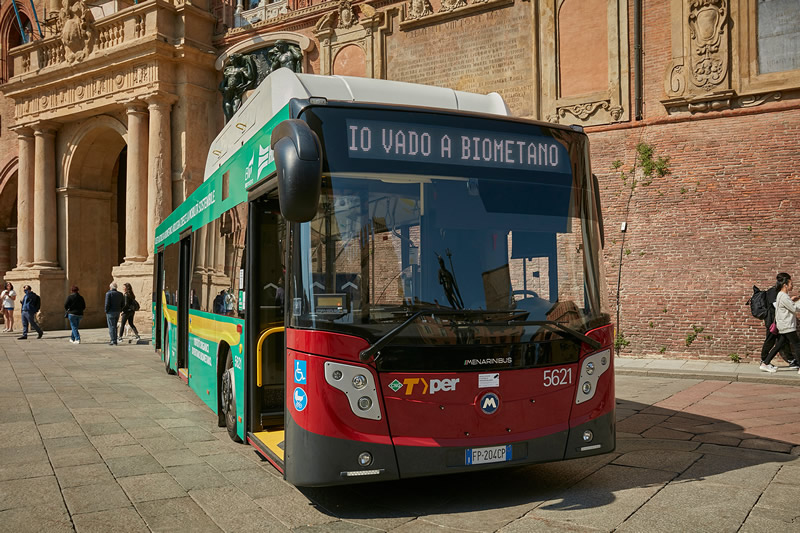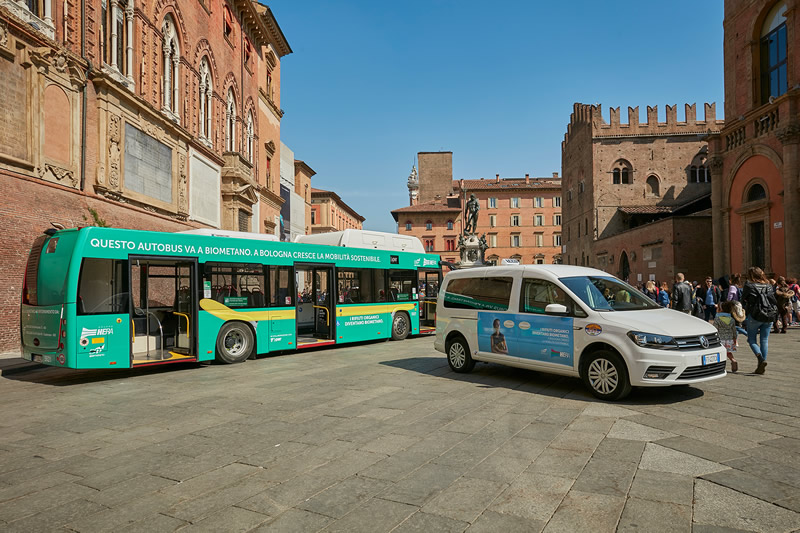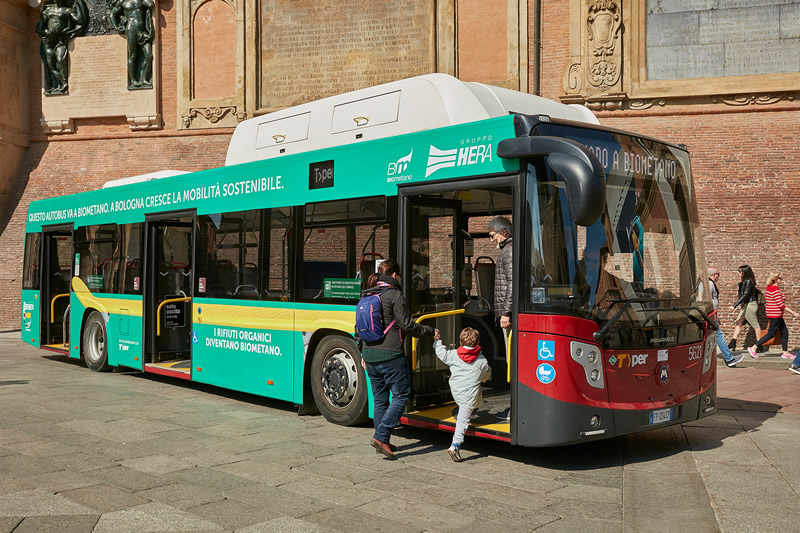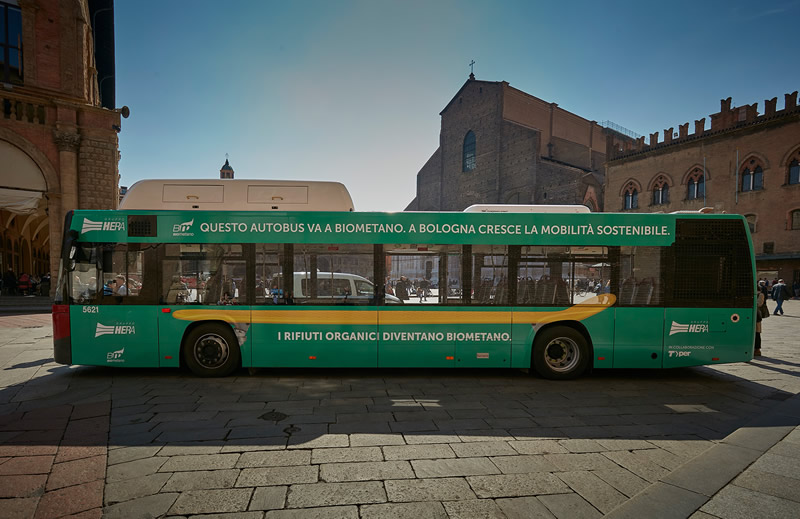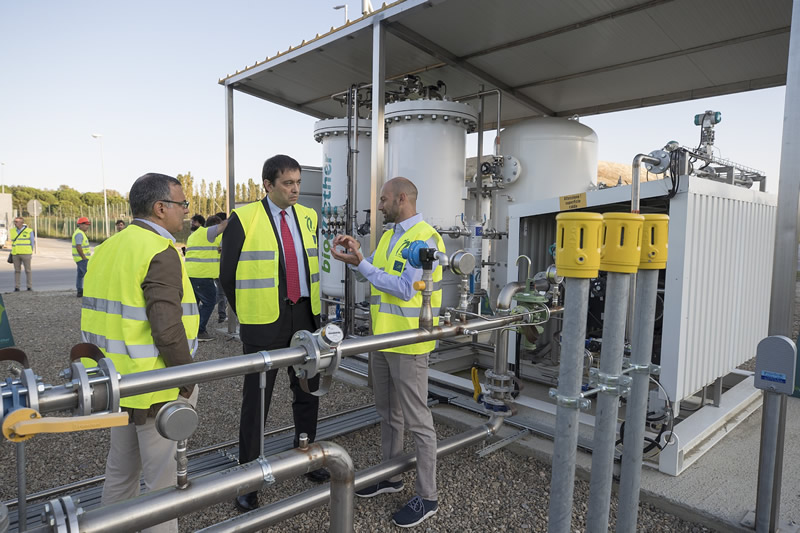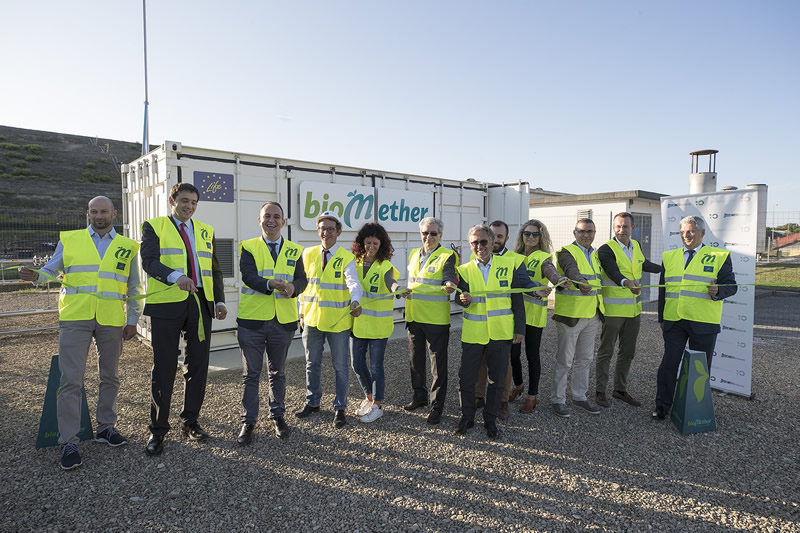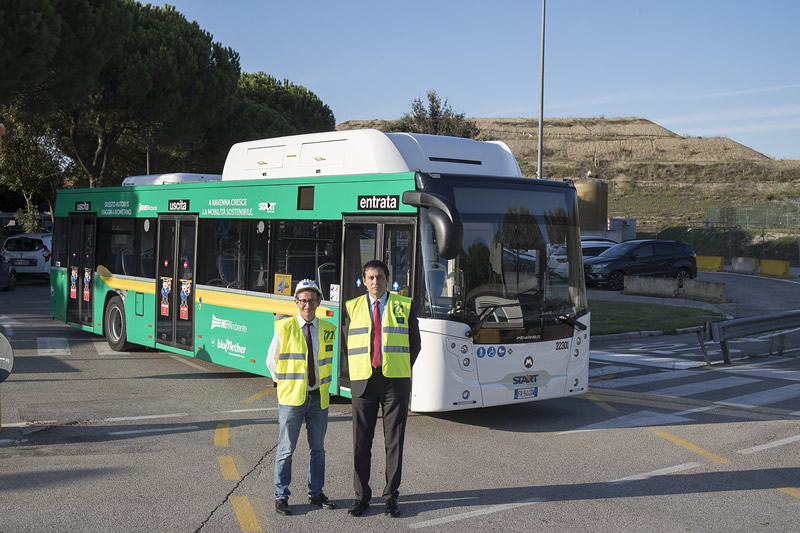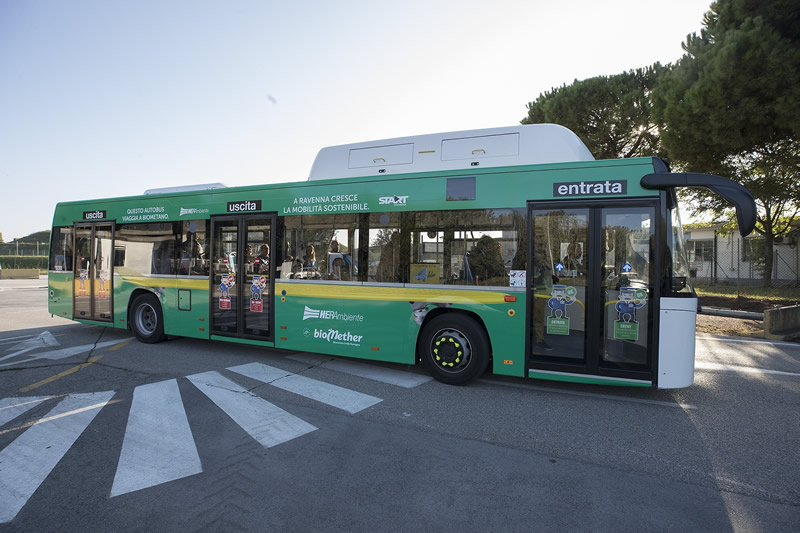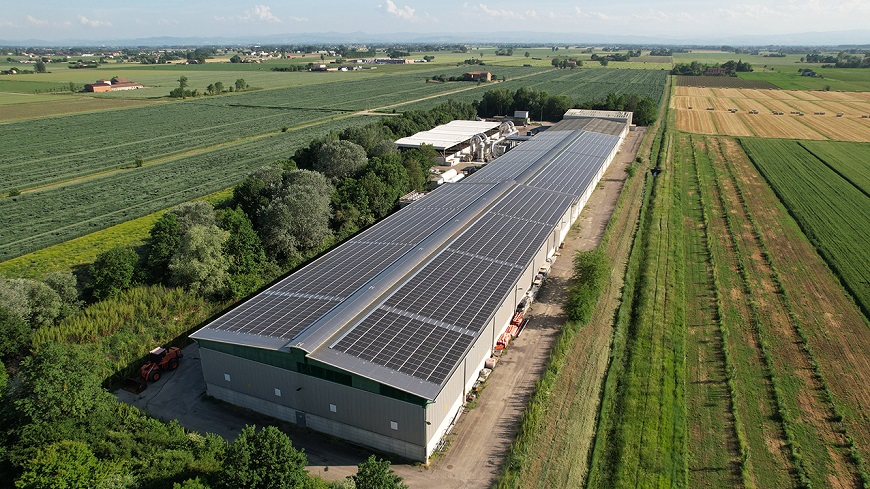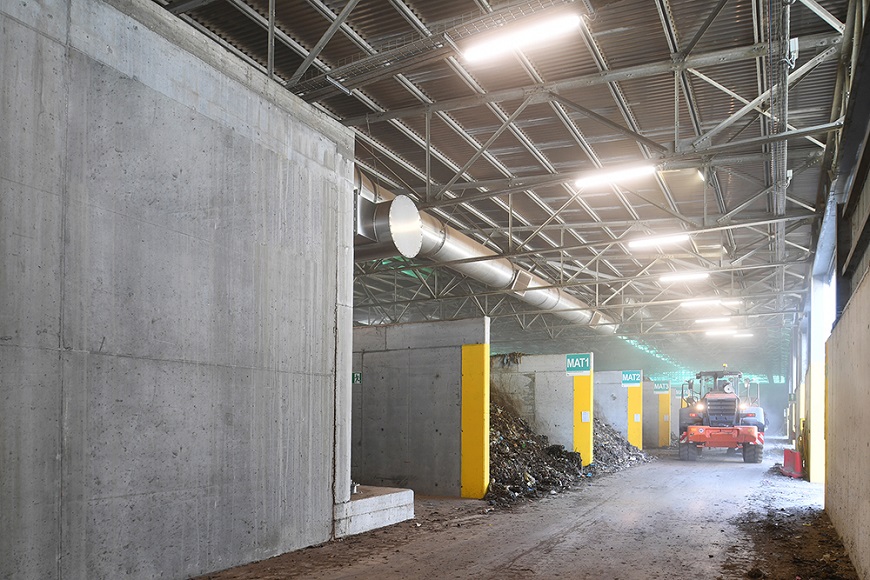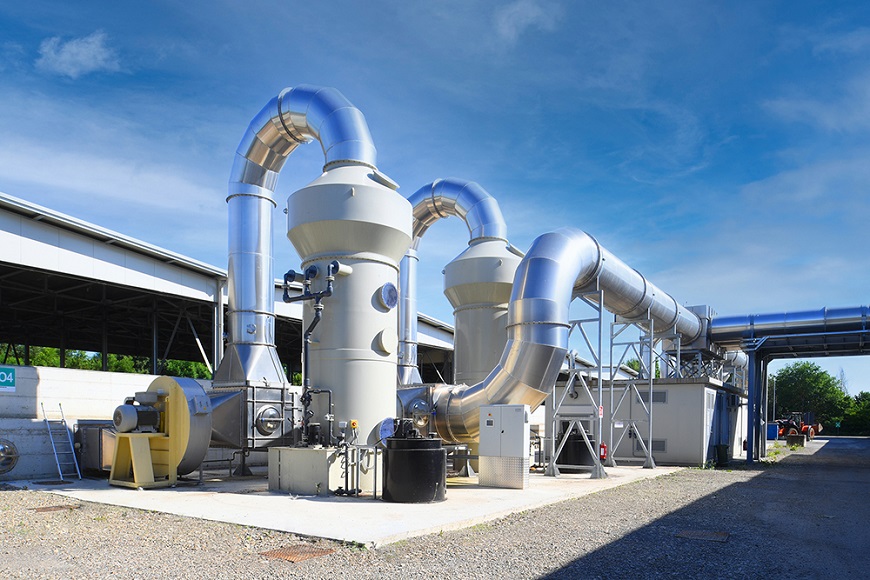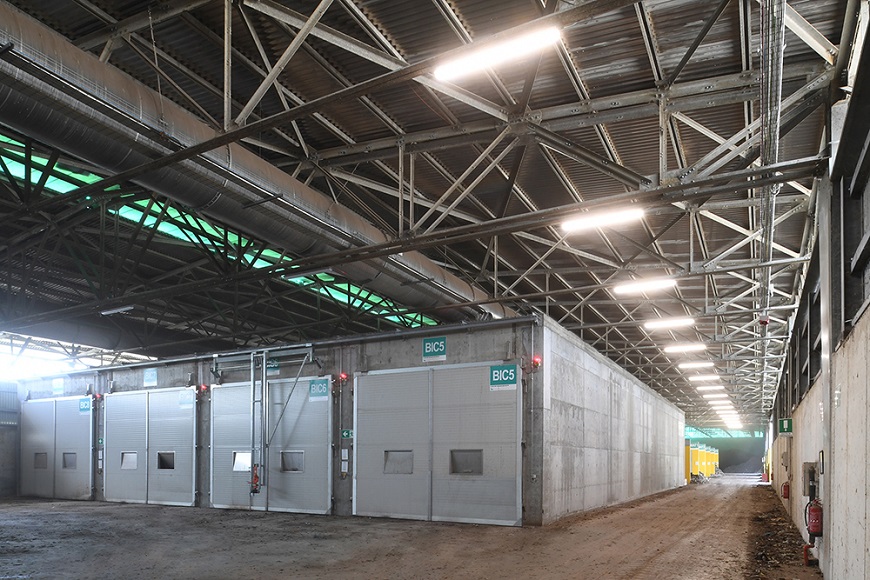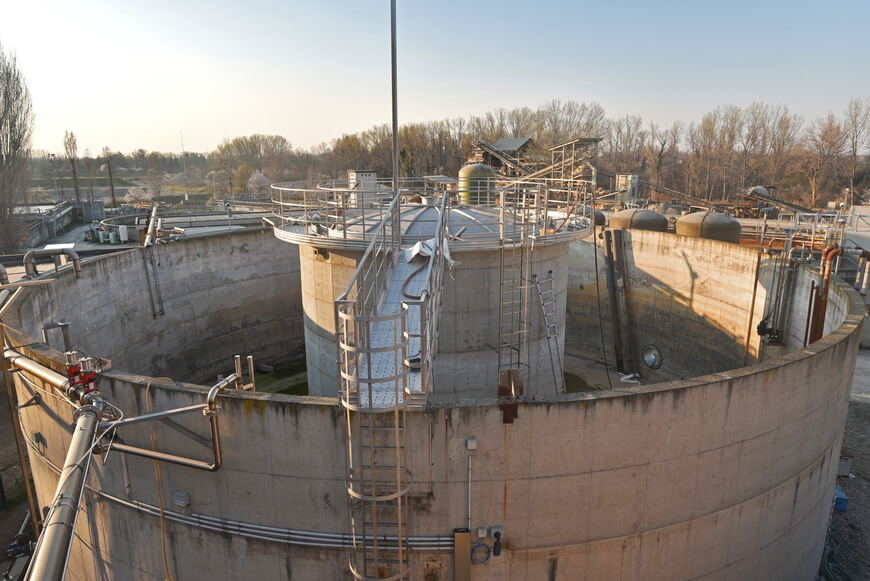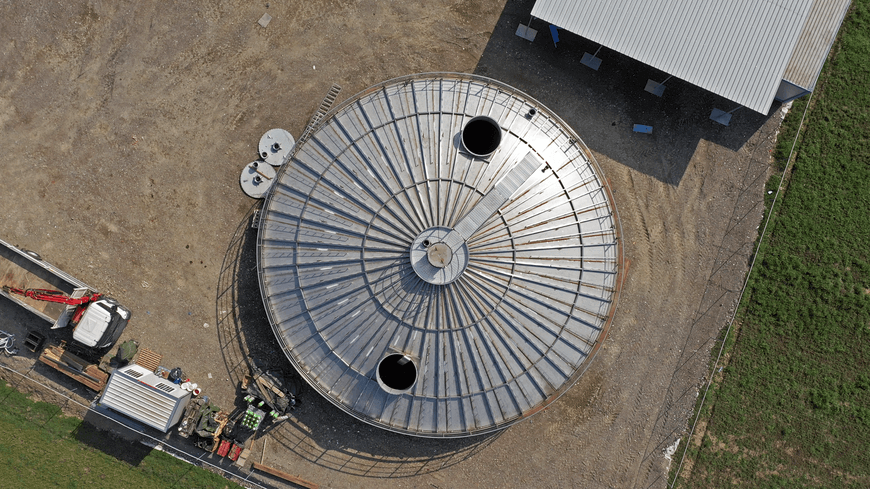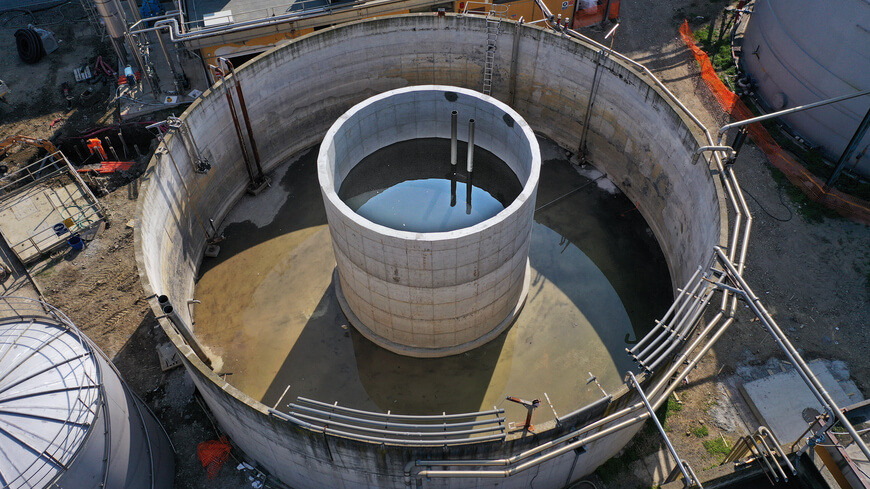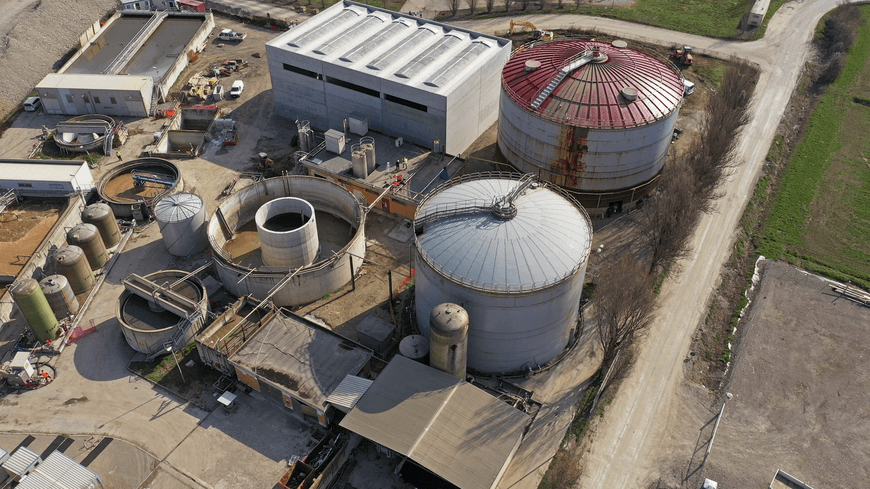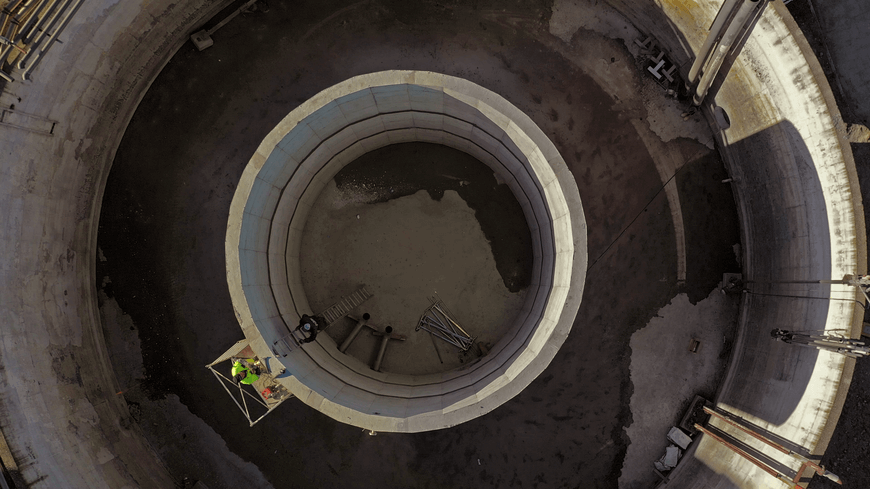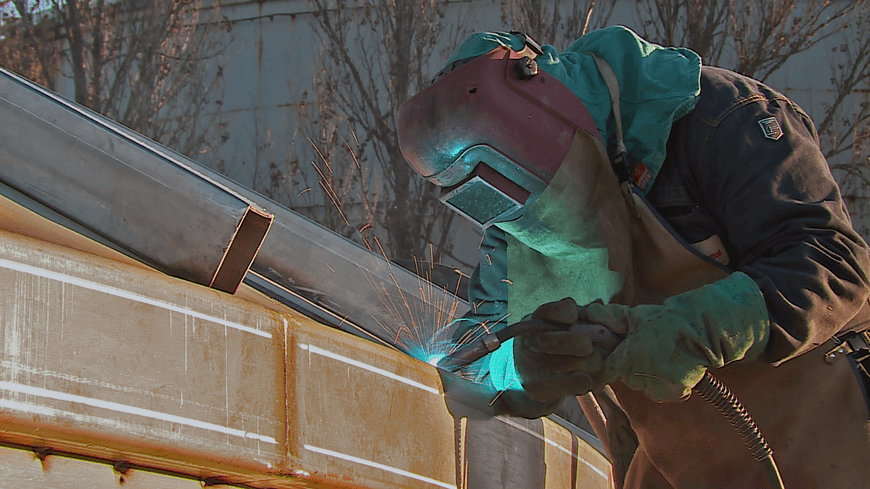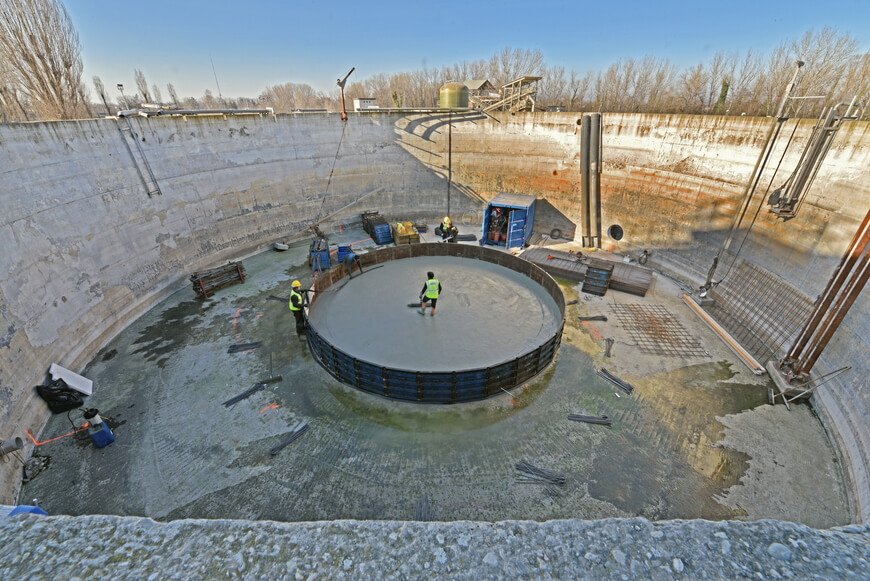At the forefront of the circular economy
Through a complex production process, waste from home kitchens is turned into biomethane, a green fuel capable of powering means of transport and being used in homes, improving air quality and the environment. We are also pioneers in biomethane production from landfill, achieving the same quality and energy contribution as fossil methane. Over the years, we have experimented with refining biogas generated by the decomposition of waste disposed of in landfill. Both biomethane produced from landfills and biomethane produced from the treatment of organic waste can be fed into the grid or used to supply methane gas fuel pumps for automotive vehicles, contributing to a virtuous circle that turns waste into resources.
The Sant'Agata Bolognese biomethane production plant
The plant, the first of its kind in Italy, opened in 2018 and produces 100% renewable fuel. Herambiente was already producing biogas to generate renewable electricity through biodigesters and landfills, but it is thanks to the Sant'Agata Bolognese plant that the biogas is refined into biomethane.
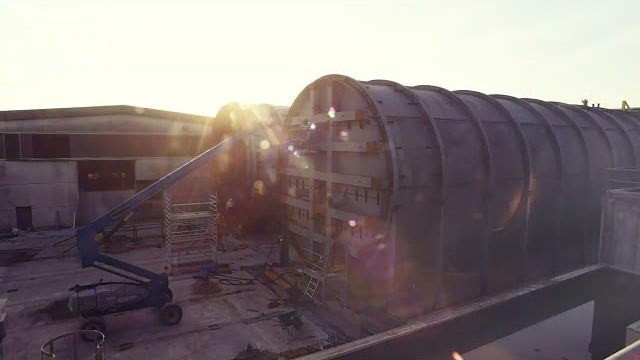
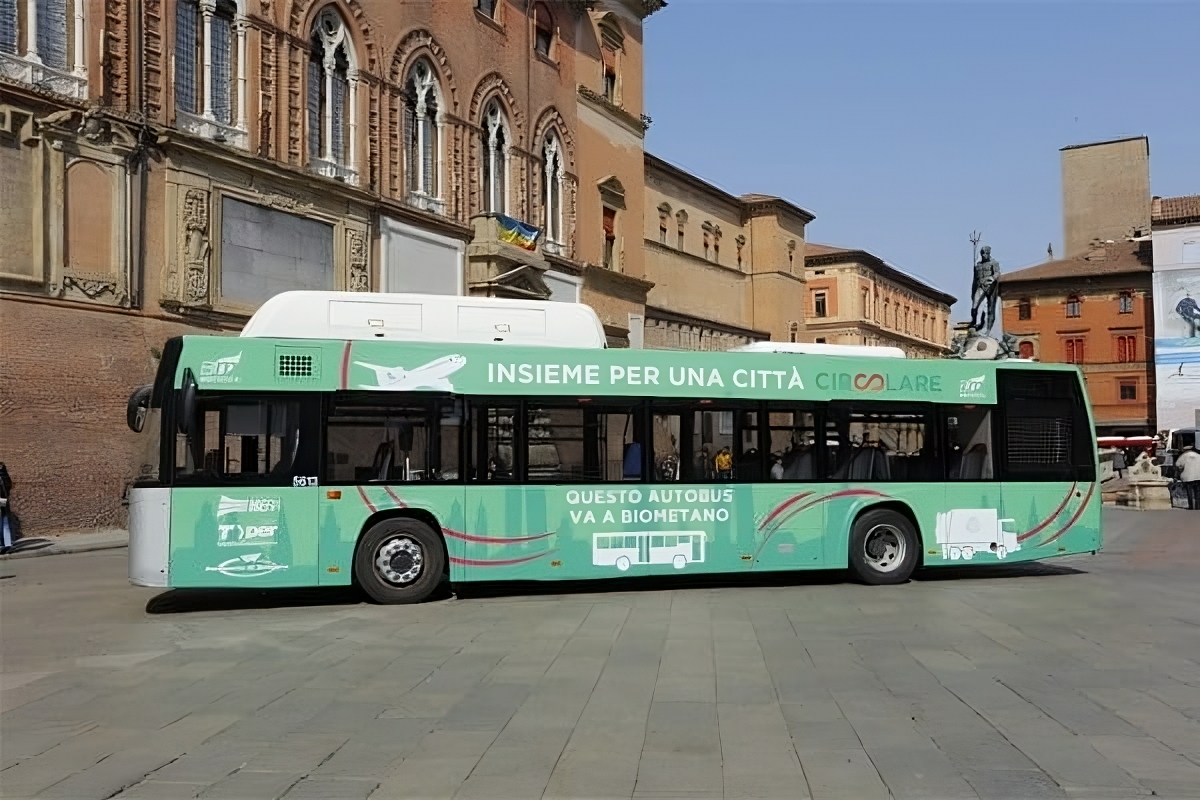
WHERE YOU CAN FIND BIOMETHANE FROM HERA GROUP
Biomethane is accessible to everyone, so also to citizens and not only in Bologna. You can refuel your vehicle with biomethane, actively contributing to improve the environment by going to one of the service stations in partnership with Hera Group, easily recognizable thanks to the graphic customization used on the distribution points. You can find biomethane at:
Castenaso (BO), in Via del Frullo 9
Medicina (BO), in Via San Vitale Ovest 377
Sasso Marconi (BO), in Via Fiaccacollo 1
Bologna, in Via degli Alberelli 1
San Giovanni in Persiceto (BO), Via Modena 112/C
Ascoli Piceno (AP), Frazione Navicella 123

Facts & Figures about the Sant'Agata Bolognese biomethane production plant
Thanks to an investment of more than 30 million euro, we were able to adopt the best anaerobic digestion and upgrading technologies for the production of biomethane, to which we also added material recovery with the production of quality compost that can be used in agriculture.
*2023 data
-
100 ktonnes/year organic waste from separate waste collection (input capacity)
-
35 ktonnes/year collection of green waste and pruning material (input capacity)
-
20 ktonnes/year compost (potential production capacity)
-
7.6 million scm/year biomethane produced
-
> 5,500 TEP avoided annually
-
Approx. 14 ktonnes/year CO2 avoided
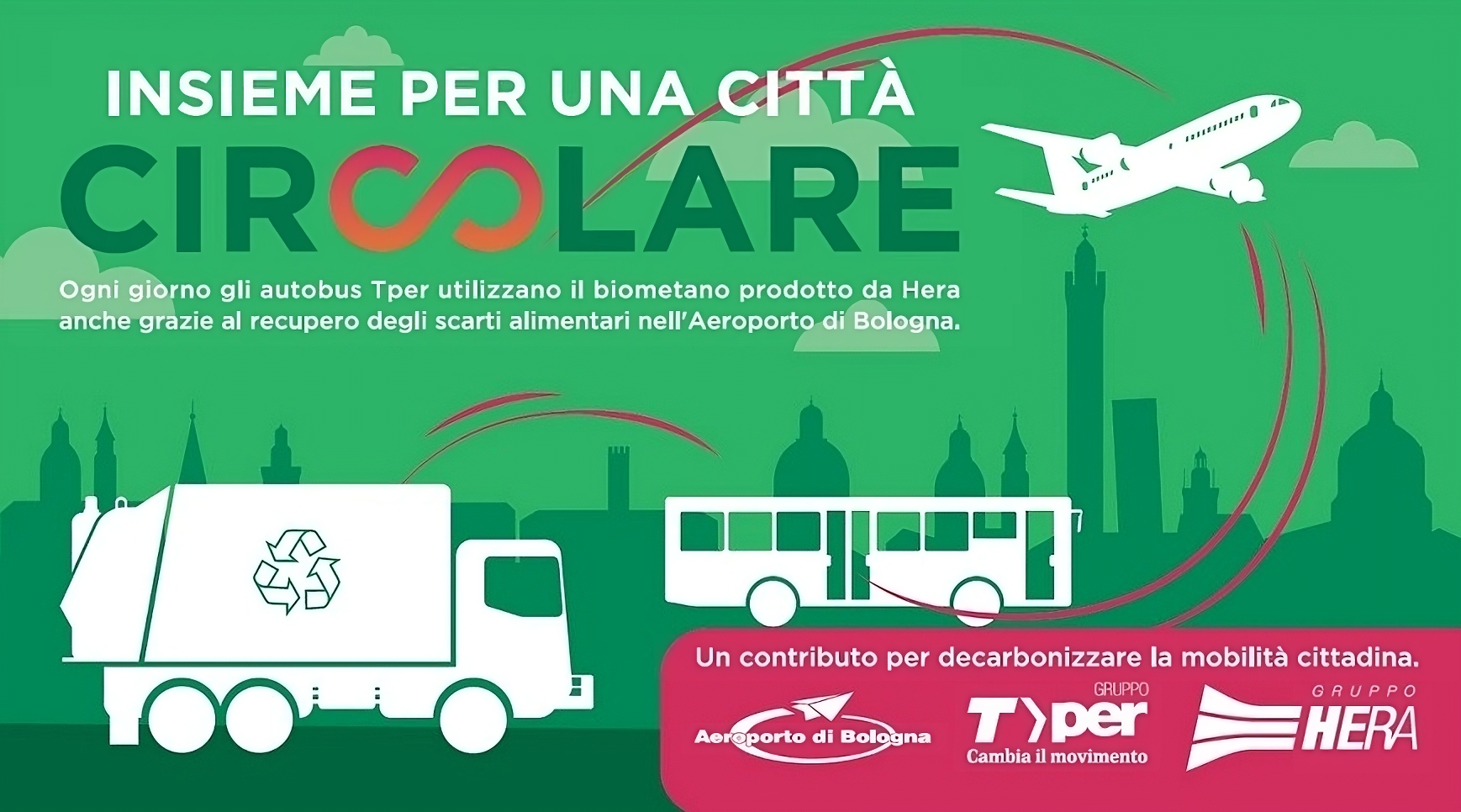
Together for a circular city
Hera Group, Tper and Bologna Airport “Together for a Circular City”- this is the meaning of the campaign that three major companies in Bologna wanted to inform citizens that joining forces, despite operating in different fields, is not only possible but also good for the environment and the city.
What does the partnership consist of? The Airport delivers its organic waste to Hera, which at the Sant'Agata Bolognese plant transforms it, along with similar waste produced by citizens, into biomethane that Tper buys to fuel the tanks of a substantial part of its bus fleet.
And the city's air gains from it.
How to let everyone know about it? Nothing better than the buses that run around the city on a daily basis and the shelters that house people waiting for public transportation, perhaps just that strange green vehicle different from all the others you are used to.
So, it is the buses and shelters, along with the social media of the three companies, that are talking to everyone to raise awareness of this contribution being made to the decarbonization of city mobility.
This is an important step for three companies that serve hundreds of thousands of citizens every day and for which they have set targets for improvement in view of the UN 2030 Agenda.
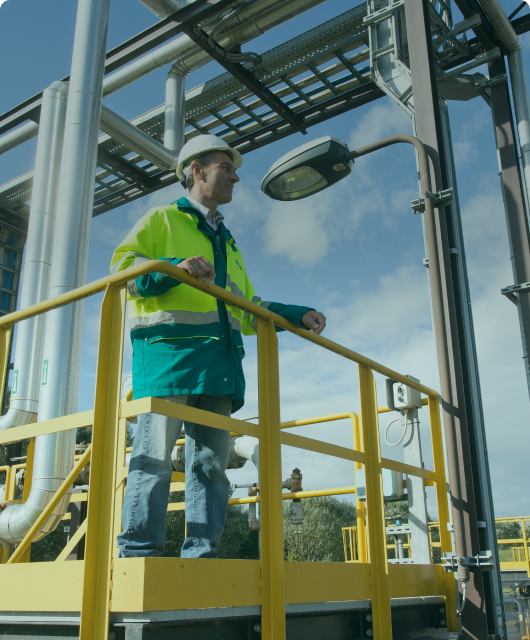
The Ravenna Biomethane Project
The experimental project for the production of biomethane from landfill biogas started in 2019 at the Herambiente landfill in Ravenna and ended in 2021. It was a demonstration project co-funded by the European Commission's LIFE Programme and part of the Biomether project. The objective was to support the development of the regional biomethane supply chain, providing indications for the definition of energy policies to support the sector.
How the project works
The experimental plant was able to produce biomethane from the biogas resulting from the bio decomposition of the organic fraction contained in landfill waste. The biomethane was used to fuel buses of the Start Romagna public transport service fleet. Specifically, the Ravenna project guaranteed an annual production of 300,000 m³ of biomethane when fully operational, thus avoiding the emission of more than 650 tonnes of CO₂. into the atmosphere. Emilia Romagna is the second largest national producer of biogas after Lombardy and has a strong potential for development in the biomethane supply chain as it has significant amounts of waste biomass from the agro industrial sector. This is why the region has assigned a key role to this renewable fuel in its energy strategies.
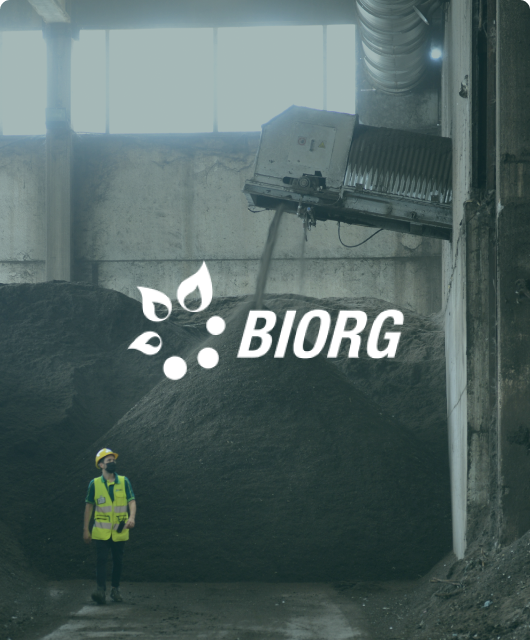
WE CONTINUE TO INVEST IN THE DEVELOPMENT OF THIS SECTOR
A strategic partnership that looks to the future, Herambiente and INALCA join forces to produce compost and biomethane
In line with the principles of ecological transition, we are continuing to invest in the compost and biomethane production sector also through new partnerships, among them the one with INALCA - a company belonging to the Cremonini Group, a leader in the production of meat and food products. In 2021 this collaboration led to the establishment of Biorg, a company dedicated to producing biomethane and compost from the separate collection of organic waste and agro-food wastewater. The company focused on the integration and modernisation process of the two partner-owned plants, which will operate in a complementary way: the biomethane production plant in Spilamberto (Modena) owned by Hera, which has been thoroughly upgraded, started operations at the end of 2022 and will reach full capacity in the first half of 2023, and the composting plant in Nonatola, previously owned by INALCA. With this partnership, Herambiente is further expanding its leadership in this sector by leveraging its technological know-how to broaden the range of matrices and fractions that can be used in the production of biomethane, from sorted organic waste to waste from mowing and pruning to landfill biogas and industrial agro-food waste.

Our plants
Find out where biomethane and compost production takes place

The facts and figures of a winning partnership
The results obtained by Biorg prove that the partnership between Herambiente and INALCA is a winning one, especially for the environment.
*2023 data
-
40 ktonnes/year organic waste from separate waste collection (input capacity from the Spilamberto plant – MO)
-
30 ktonnes/year agro-industrial waste (input capacity from the Spilamberto plant – MO)
-
18 ktonnes/year compost (potential production capacity from the Nonantola plant - MO)
-
3.7 million smc/year biomethane (potential production capacity from the Nonantola plant - MO)
Press Releases
-
Comunicato stampa PROGETTO BIOMETANO RAVENNA
-
Nella Regione più metanizzata d'Europa il metano è verde! PROGETTO BIOMETANO RAVENNA
-
Comunicato stampa PROGETTO BIOMETANO SANT'AGATA BOLOGNESE
-
Autobus e taxi viaggiano con il biometano del Gruppo Hera
-
Comunicato stampa GRUPPO HERA, TPER E AEROPORTO DI BOLOGNA “INSIEME PER UNA CITTÀ CIRCOLARE
-
Comunicato stampa IL PROGETTO BIOMETANO SI AMPLIA CON UNA PARTNERSHIP CON INALCA


